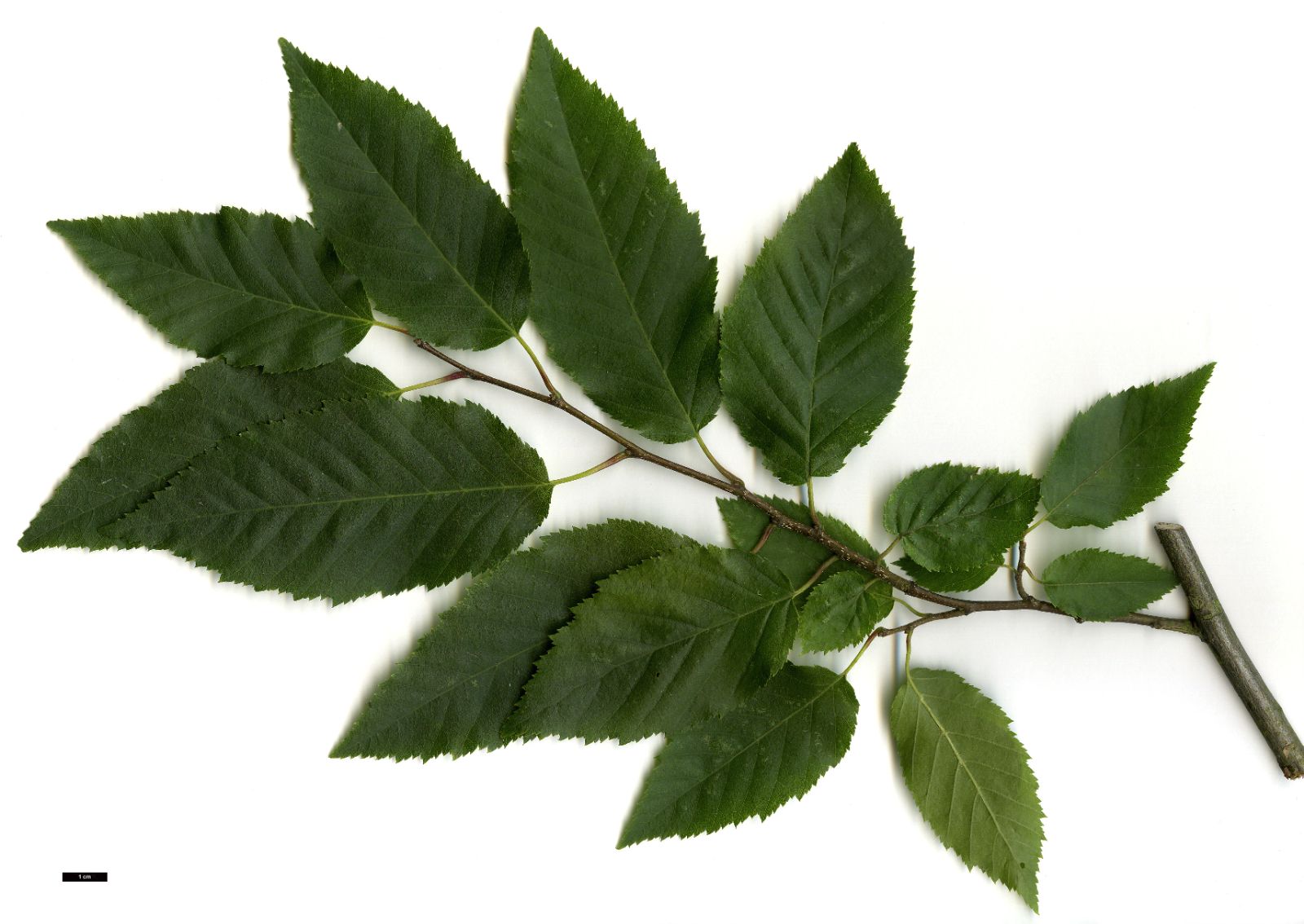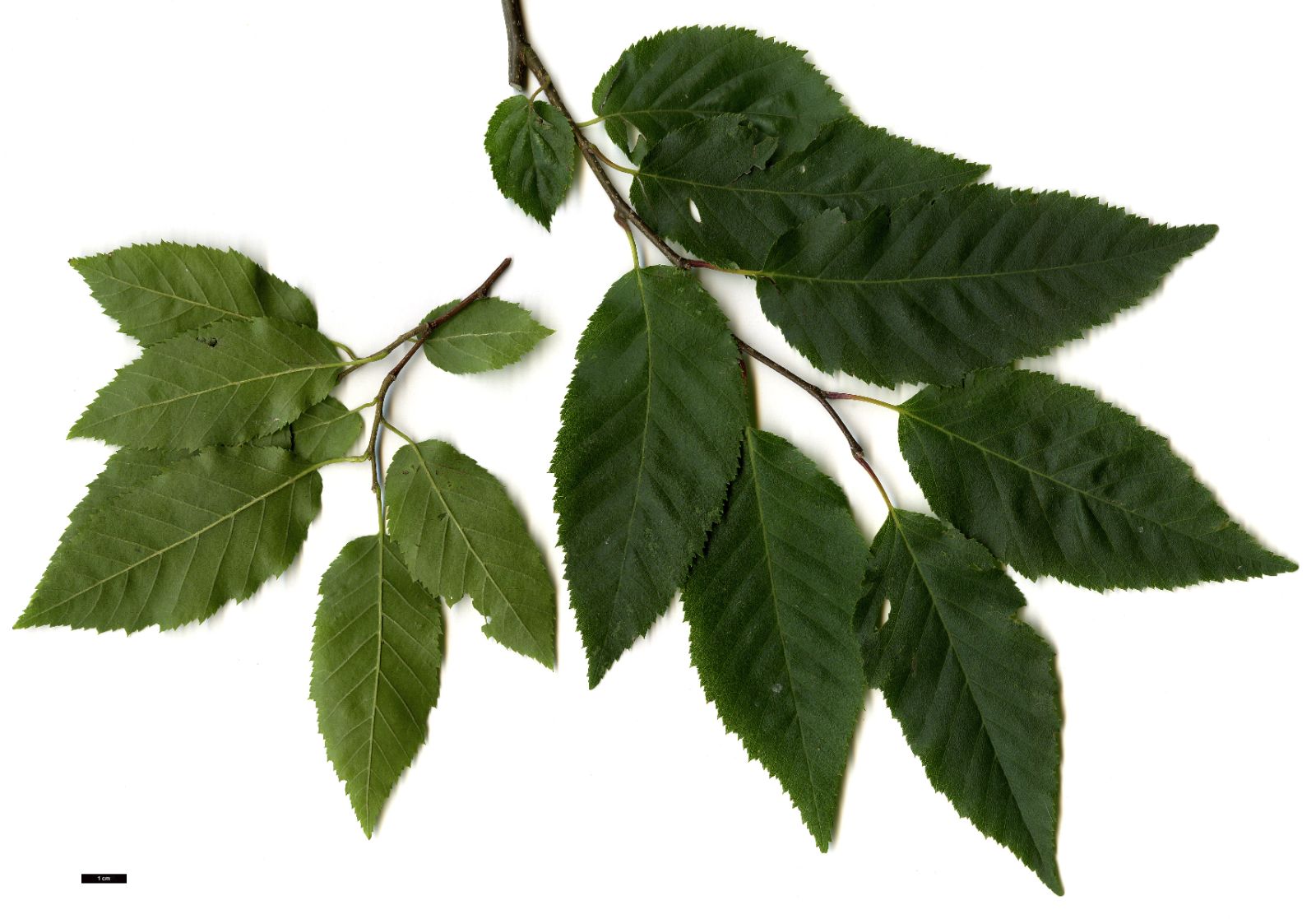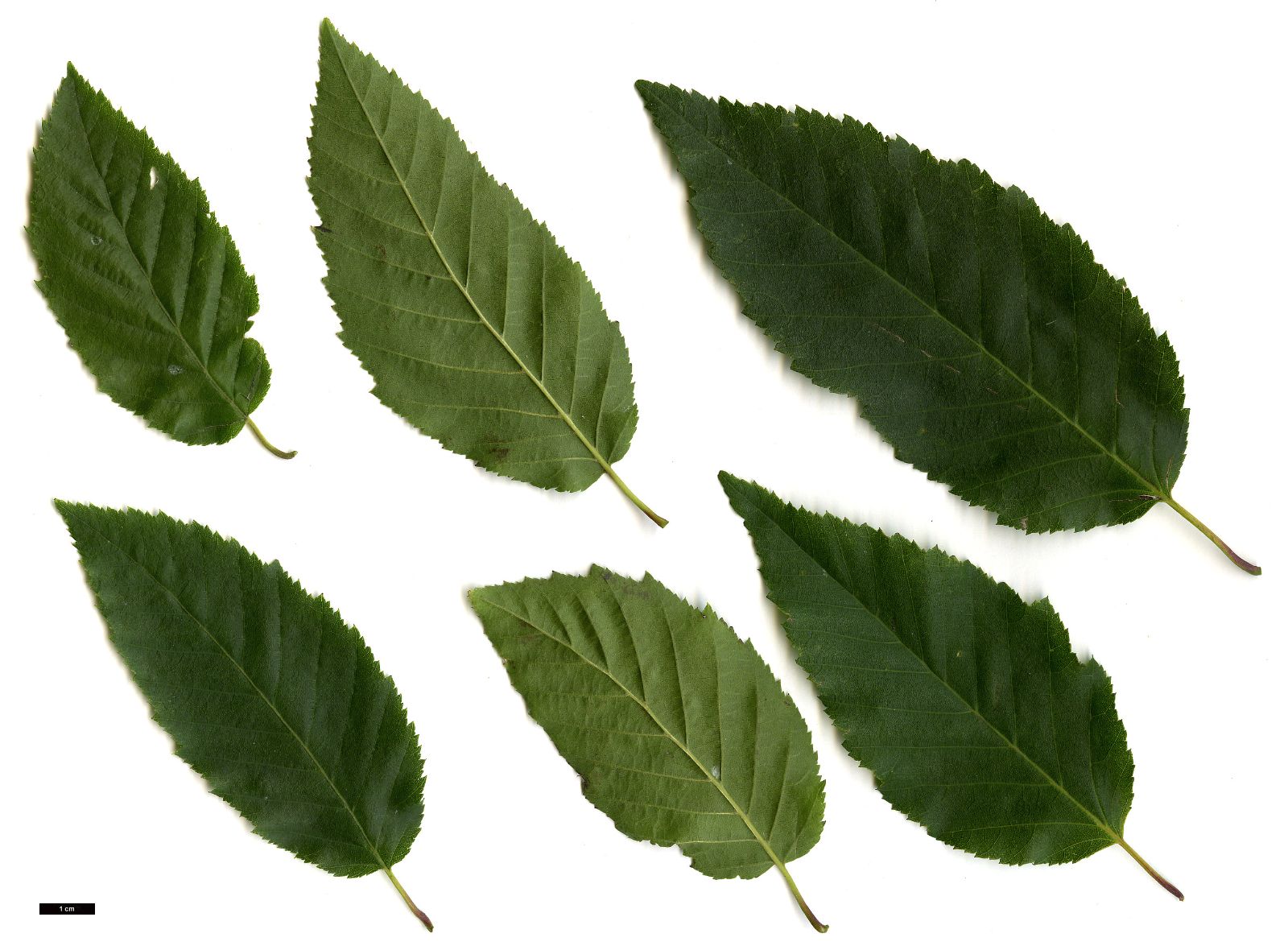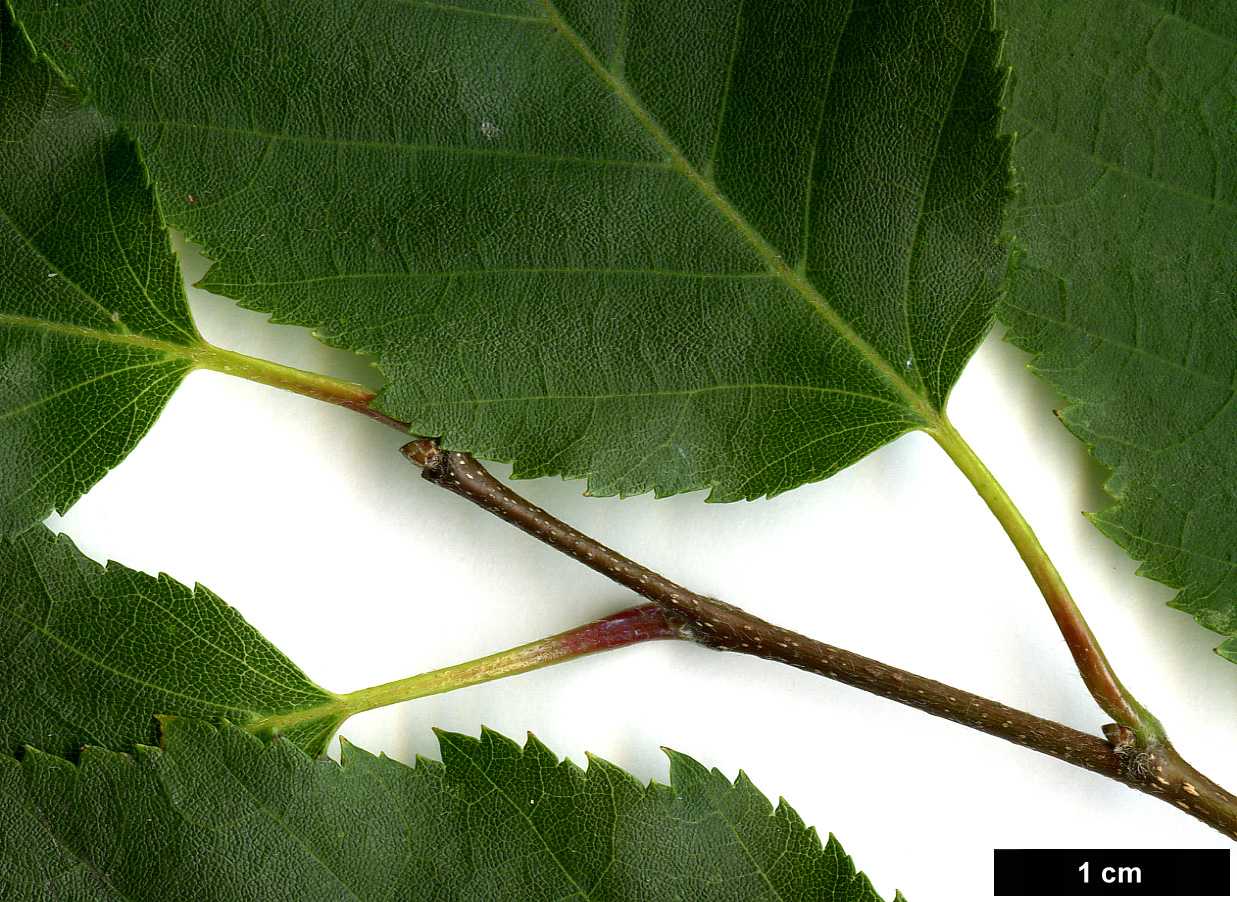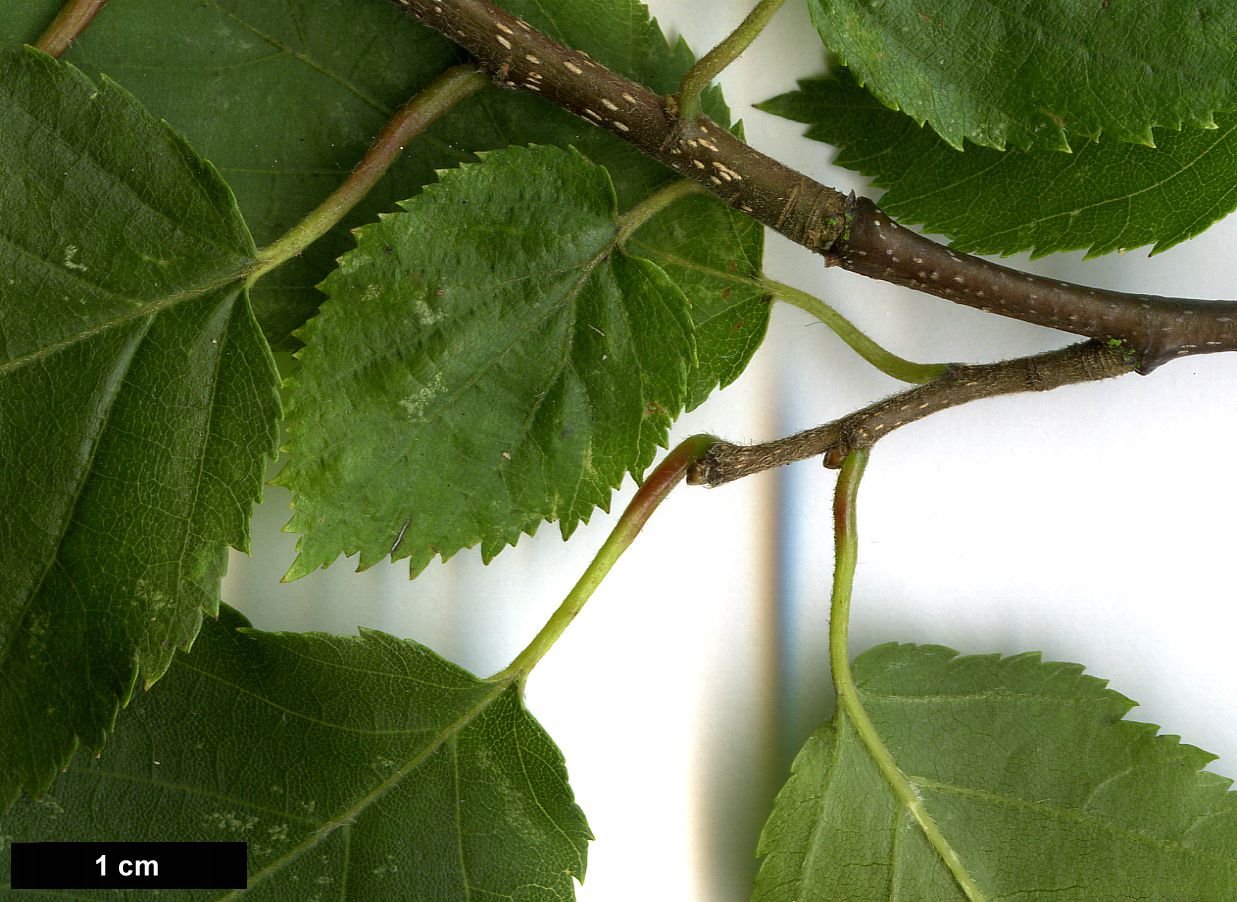Carpinus tropicalis
Sponsor
Kindly sponsored by
Lord and Lady Aldington
Credits
Owen Johnson (2022)
Recommended citation
Johnson, O. (2022), 'Carpinus tropicalis' from the website Trees and Shrubs Online (treesandshrubsonline.
Infraspecifics
Other taxa in genus
- Carpinus betulus
- Carpinus caroliniana
- Carpinus cordata
- Carpinus faginea
- Carpinus fangiana
- Carpinus fargesiana
- Carpinus hebestroma
- Carpinus henryana
- Carpinus japonica
- Carpinus kawakamii
- Carpinus laxiflora
- Carpinus londoniana
- Carpinus mollicoma
- Carpinus monbeigiana
- Carpinus omeiensis
- Carpinus orientalis
- Carpinus polyneura
- Carpinus pubescens
- Carpinus rankanensis
- Carpinus × schuschaensis
- Carpinus shensiensis
- Carpinus tschonoskii
- Carpinus turczaninovii
- Carpinus viminea
Tree to c. 20 m. Bark smooth, grey, with some fissures in age. Shoots grey, slender, zig-zag, with silky hairs; buds short, bluntly ovate, 3–4 mm. Leaves ovate, 3–12 × 2–6 cm, base rounded to cordate, apex rather shortly pointed; lateral veins in 14–20 pairs, each tipped by a fine tooth between which are several teeth variably smaller; silky-hairy at least under the veins; petiole 6–20 mm, hairy. Autumn colour yellow to red. Fruiting catkin 3–7(–12) cm long; bracts 2–3.5 × 1.4–2.8 cm, 3-lobed, asymmetrical, the inner lobe very small and the central lobe often toothed on one side only. (Rushforth 1985).
Distribution El Salvador Guatemala Honduras Mexico Chiapas, Guerrero, Hidalgo, Jalisco, México State, Michoacán, Morelos, Nayarit, Neuvo León, Oaxaca, Puebla, San Luis Potosí, Sinaloa, Tamaulipas, Veracruz Nicaragua
Habitat Tropical to temperate mountain forests.
USDA Hardiness Zone 9
RHS Hardiness Rating H4
Conservation status Data deficient (DD)
Many American authorities place the Mexican Carpinus tropicalis in synonymy with C. caroliniana, the hornbeam of the eastern United States. Trees do not, of course, observe political boundaries, but in this case there is a large gap between the current distribution of C. caroliniana, which extends southwards to north-eastern Texas, and that of C. tropicalis which reaches its northern limit in the mountains of Tamaulipas. The taxa are clearly closely related, but the implication is that C. caroliniana has spread northwards from Ice-Age refuges within the south-eastern United States, while C. tropicalis is a relic species which has failed to spread from its high-altitude southerly haunts. Plants of the World Online (2022), and Holstein & Weigend (2017), both recognise subsp. mexicana Furlow, endemic to the mountains of Mexico, growing on moist slopes and canyons in cloud forest where it is potentially threatened (Shaw et al. 2014).
The name tropicalis may have discouraged temperate gardens from experimenting with this tree. An introduction made by James Russell from Veracruz in southern Mexico – which could have been either subsp. mexicana or subsp. tropicalis – failed to survive in the UK (Rushforth 1985), and a 1995 introduction by Allen Coombes, again from Veracruz (Coombes 211), also proved very tender (A. Coombes pers. comm.). However, a collection of subsp. mexicana made by the Texan plantsman John Fairey from Tamaulipas, at the northern end of the species’ range, proved quite hardy in Maurice Foster’s garden at White House Farm, at 150 m asl in western Kent where 10°C of frost is not uncommon. The original tree was 6 m tall in 2009, but growing in a crowded spot it was removed and replaced by cuttings, one of which had reached 4 m in an open location in 2019 (Tree Register 2022). It is placed next to a Lord Howick collection of C. caroliniana, and the opportunity to study the two taxa side by side reveals subtle differences in foliage features.
Material from this collection was commercially available from Pan-Global Plants from 2019 (Pan-Global Plants 2019); the autumn colour is described as good, but this is possibly a simple result of the association with the performance (in America) of Carpinus caroliniana.
subsp. mexicana Furlow
Distribution
- Mexico – Hidalgo, Jalisco, México, Michoacán, Morelos, Nayarit, Nuevo León, Puebla, San Luis Potosí, Tamaulipas, Veracruz
RHS Hardiness Rating: H4
USDA Hardiness Zone: 6
Discussed in the main entry for C. tropicalis.

